 W
WThe New Zealand Wars were a series of armed conflicts that took place in New Zealand from 1845 to 1872 between the Colonial government and allied Māori on one side and Māori and Māori-allied settlers on the other. They were previously commonly referred to as the Land Wars or the Māori Wars while Māori language names for the conflicts included Ngā pakanga o Aotearoa and Te riri Pākehā. Historian James Belich popularised the name "New Zealand Wars" in the 1980s, although the term was first used by historian James Cowan in the 1920s.
 W
WThe Albert Barracks was a major British military installation that overlooked Auckland, New Zealand, from the mid-1840s to 1870, during the city's early colonial period. The perimeter wall was built between 1846 and the early 1850s, in the area now bounded by Kitchener Street, Waterloo Quadrant, Symonds Street, and Wellesley Street East, according to Colonel T R Mould's 1860 map of Defensible Works round Auckland. The site is now mostly occupied by Albert Park and the University of Auckland's City Campus, and Princes Street runs through the centre of it. All that remains of the barracks structures is part of the perimeter wall, which is on the university campus.
 W
WThe Battle Hill engagement took place from 6 to 13 August 1846, during the New Zealand Wars and was one of the last engagements of the Hutt Valley Campaign.
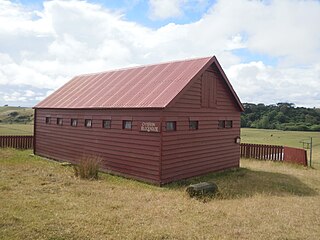 W
WThe Cameron Blockhouse is a timber blockhouse in Wanganui, New Zealand, built during the New Zealand Wars in the mid-1800s. It is a rare surviving example of a privately constructed redoubt from that era.
 W
WThe Dog Tax war was a confrontation in 1898 between the Crown and a group of Northern Māori, led by Hone Riiwi Toia, opposed to the enforcement of a 'dog tax'. It has been described by some authors as the last gasp of the 19th-century wars between the Māori and the Pākehā, the British settlers of New Zealand. It was, however, a bloodless "war", with only a few shots being fired. Hone Heke Ngapua, MHR for Northern Māori, was responsible for de-escalating the confrontation.
 W
WThe Flagstaff War, also known as Heke's War, Hōne Heke's Rebellion and the Northern War, was fought between 11 March 1845 and 11 January 1846 in and around the Bay of Islands, New Zealand. The conflict is best remembered for the actions of Hōne Heke who challenged the authority of the British by cutting down the flagstaff on Flagstaff Hill at Kororāreka, now Russell. The flagstaff had been a gift from Hōne Heke to James Busby, the first British Resident. The Northern War involved many major actions, including the Battle of Kororāreka on 11 March 1845, the Battle of Ohaeawai on 23 June 1845 and the siege of Ruapekapeka Pā from 27 December 1845 to 11 January 1846.
 W
WThe Invasion of the Waikato was the biggest and most important campaign of the 19th-century New Zealand Wars, fought in the North Island of New Zealand between the military forces of the colonial government and a federation of Māori tribes known as the Kingitanga Movement. The Waikato is a territorial region with a northern boundary somewhat south of the city of Auckland. Hostilities lasted for nine months, from July 1863 to April 1864. The invasion was aimed at crushing Kingite power, which was seen as a threat to British authority, and also at driving Waikato Māori from their territory in readiness for occupation and settlement by Europeans. The campaign was fought by a peak of about 14,000 Imperial and colonial troops and about 4,000 Māori warriors drawn from more than half the major North Island tribal groups.
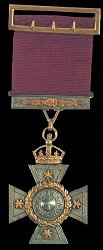 W
WThe New Zealand Cross was introduced in 1869 during the New Zealand Wars in New Zealand. The wars were fought between natives of New Zealand, the Māori, and forces raised by European settlers known as Pākehā assisted by British troops.
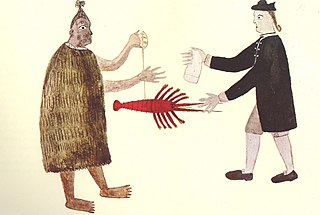 W
WThe New Zealand land confiscations took place during the 1860s to punish the Kingitanga movement for attempting to set up an alternative, Māori, form of government that forbade the selling of land to European settlers. The confiscation law targeted Kingitanga Māori against whom the government had waged war to restore the rule of British law. More than 1,200,000 hectares or 4.4 percent of land were confiscated, mainly in Waikato, Taranaki and the Bay of Plenty, but also in South Auckland, Hauraki, Te Urewera, Hawke's Bay and the East Coast.
 W
WThe New Zealand Medal was a campaign medal awarded to Imperial and Colonial troops in the New Zealand Wars of 1845–47 and 1860–66. The New Zealand Wars were previously known as the Māori Wars, Anglo-Māori Wars or Land Wars.
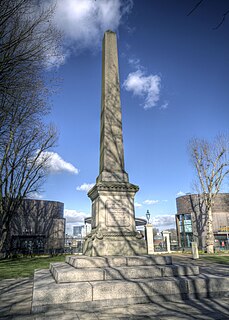 W
WThe New Zealand Memorial is an obelisk in Greenwich that commemorates 21 British officers and men of the Royal Navy who died in the New Zealand War of 1863–64. The memorial is located near the River Thames, east of the Cutty Sark, close to the Royal Naval College, Greenwich. It became a Grade II listed building in 1973.
 W
WParihaka is a community in the Taranaki region of New Zealand, located between Mount Taranaki and the Tasman Sea. In the 1870s and 1880s the settlement, then reputed to be the largest Māori village in New Zealand, became the centre of a major campaign of non-violent resistance to European occupation of confiscated land in the area. Armed soldiers were sent in and arrested the peaceful resistance leaders and many of the Maori residents, often holding them in jail for months without trials.
 W
WPioneer was a 19th-century paddle-steamer gunboat used in New Zealand. Built-in Sydney to the order of the New Zealand colonial government by the Australian Steam Navigation Company, she cost £9,500. Launched in 1863, she was towed across the Tasman Sea by HMS Eclipse, leaving Sydney on 22 September and arriving at Onehunga on 3 October 1863.
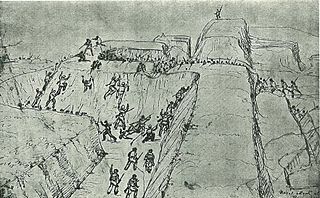 W
WThe Battle of Rangiriri was a major engagement in the invasion of Waikato, which took place on 20–21 November 1863 during the New Zealand Wars. More than 1400 British troops defeated about 500 warriors of the Kingitanga, which was resisting the expansion of British settlement and colonial rule in the North Island. The battle cost both sides more than any other engagement of the land wars and also resulted in the capture of 180 Māori prisoners, which impacted on their subsequent ability to oppose the far bigger British force.
 W
WThe Second Taranaki War is a term used by some historians for the period of hostilities between Māori and the New Zealand Government in the Taranaki district of New Zealand between 1863 and 1866. The term is avoided by some historians, who either describe the conflicts as merely a series of West Coast campaigns that took place between the Taranaki War (1860–1861) and Titokowaru's War (1868–69), or an extension of the First Taranaki War.
 W
WThe Smelting House ruins on Kawau Island, New Zealand, belong to the copper mine established in 1844. As there were problems with combustion of the copper ore during the sea voyage to Wales or Australia, tenders were called in 1848 for the erection of a copper mine smelter. The Auckland architect Walter Robertson designed a simple building completely built of Waitematā sandstone. Opened in July 1849, it was New Zealand's first smelting house. The smelter was no longer functioning in September 1855, and shortly after that, the mine closed altogether.
 W
WTītokowaru's War was a military conflict that took place in the South Taranaki region of New Zealand's North Island from June 1868 to March 1869 between the Ngāti Ruanui Māori tribe and the New Zealand Government. The conflict, near the conclusion of the New Zealand wars, was a revival of hostilities of the Second Taranaki War as Riwha Tītokowaru, chief of the Ngāti Ruanui's Ngaruahine hapu (sub-tribe), responded to the continued surveying and settlement of confiscated land with well-planned and effective attacks on settlers and government troops in an effort to block the occupation of Māori land.
 W
WThe Upper Hutt Blockhouse also known as the Wallaceville Blockhouse is a 19th-century American-style military blockhouse situated in Upper Hutt, New Zealand. One of very few such blockhouses built in New Zealand, it is preserved as a Category I historic place. It was built in late 1860 as part of a larger Stockade and was one of two Blockhouses and Stockades built in the Hutt Valley that year. It was occupied by the Hutt Battalion of the Wellington Militia from December 1860 to May 1861 without coming under hostile attack.
 W
WThe Victoria Cross (VC) was awarded to 15 recipients for action during the New Zealand Wars. The VC is a military decoration awarded for valour "in the face of the enemy" to members of armed forces of some Commonwealth countries and previous British Empire territories. It takes precedence over all other orders, decorations and medals; it may be awarded to a person of any rank in any service and to civilians under military command. The award was officially constituted when Queen Victoria issued a warrant under the Royal sign-manual on 29 January 1856, which was gazetted on 5 February 1856. The order was backdated to 1854 to recognise acts of valour during the Crimean War.
 W
WThe Völkner incident describes the murder of the German-born Protestant missionary Carl Sylvius Völkner in New Zealand in 1865 and the consequent miscarriage of justice by the Government of New Zealand during the New Zealand Wars.
 W
WThe Wairau Affray, on 17 June 1843, was the first serious clash of arms between Māori and the British settlers in New Zealand after the signing of the Treaty of Waitangi and the only one to take place in the South Island. The incident was sparked when a magistrate and a representative of the New Zealand Company, who held a possibly fraudulent deed to land in the Wairau Valley in Marlborough in the north of the South Island, led a group of European settlers to attempt to clear Māori off the land and arrest Ngāti Toa chiefs Te Rauparaha and Te Rangihaeata. Fighting broke out and 22 British settlers were killed, several after their surrender. Four Māori were killed, including the wife of Te Rangihaeata and the wife of Te Rauparaha.